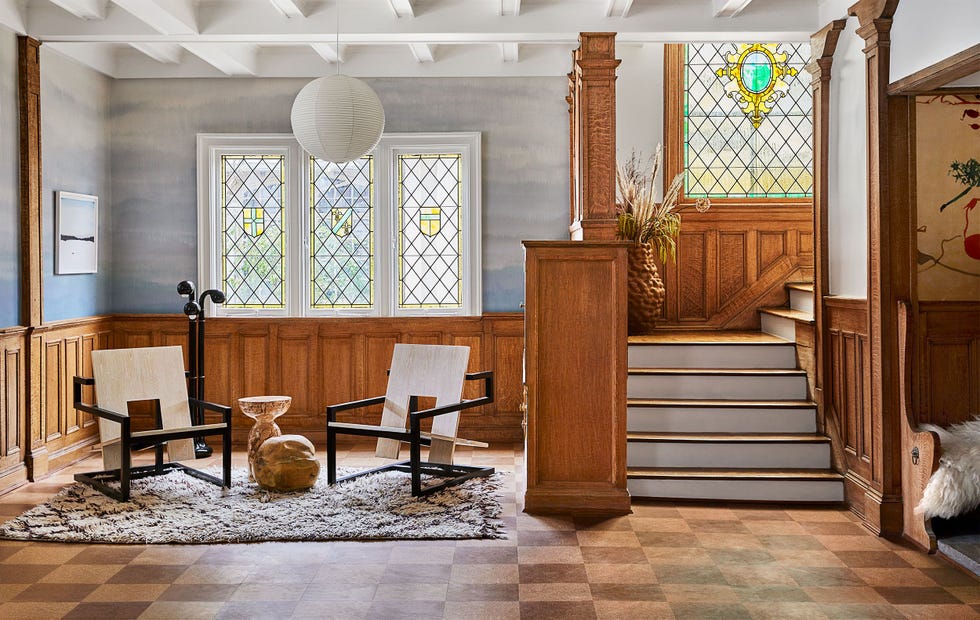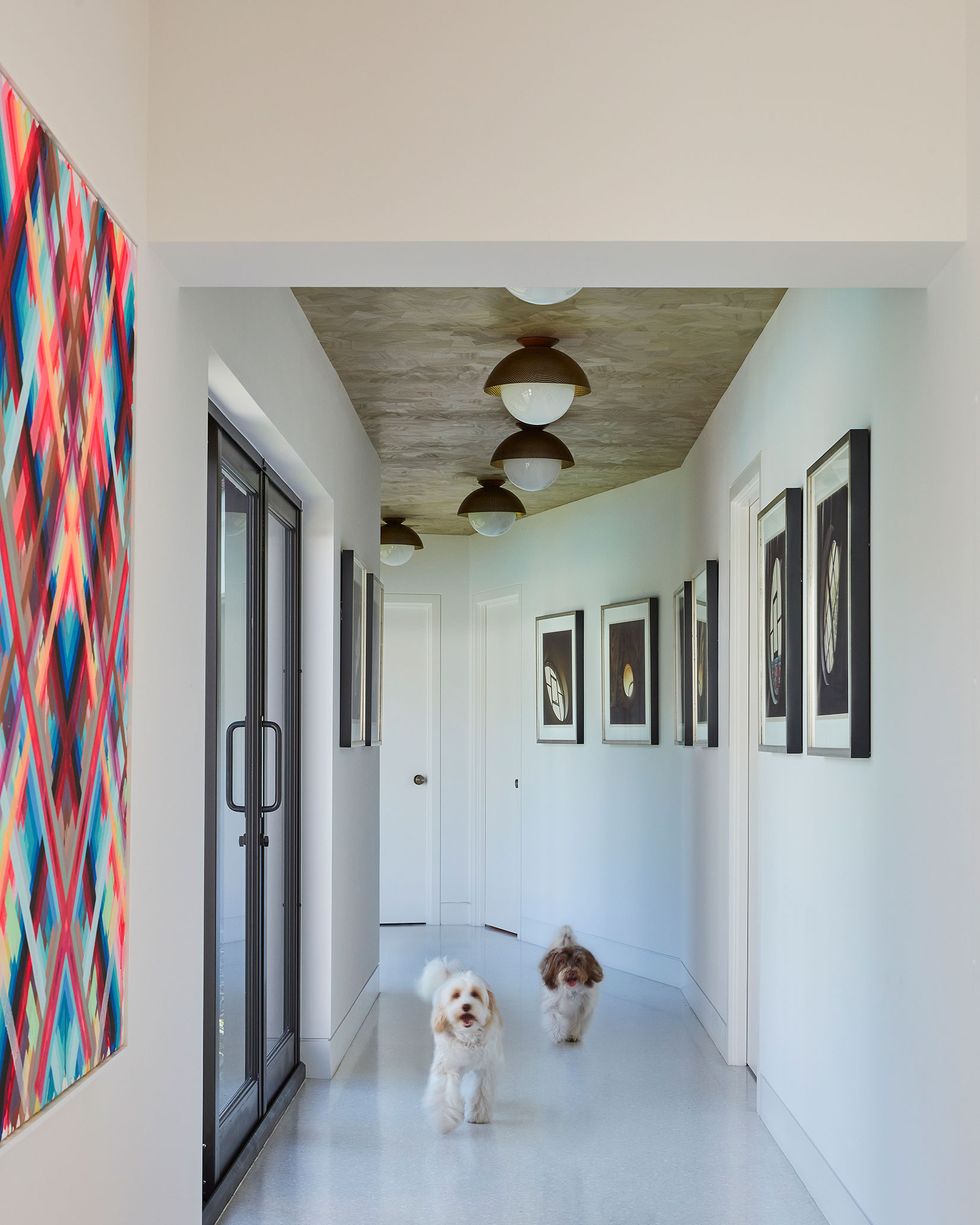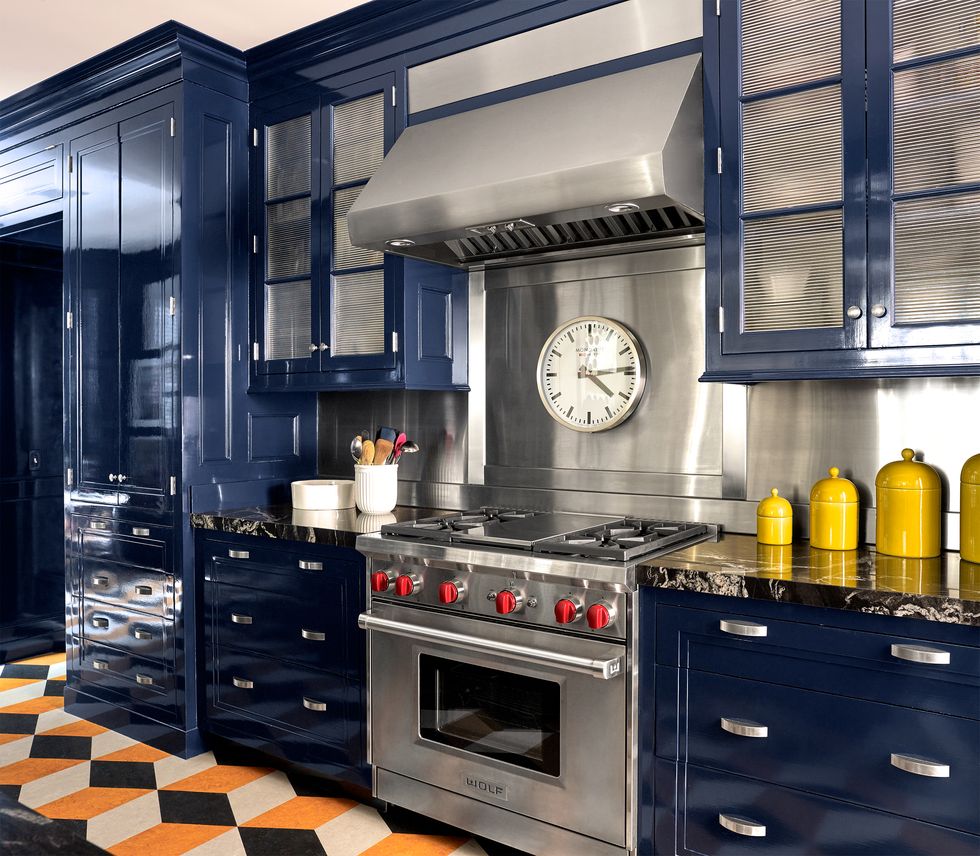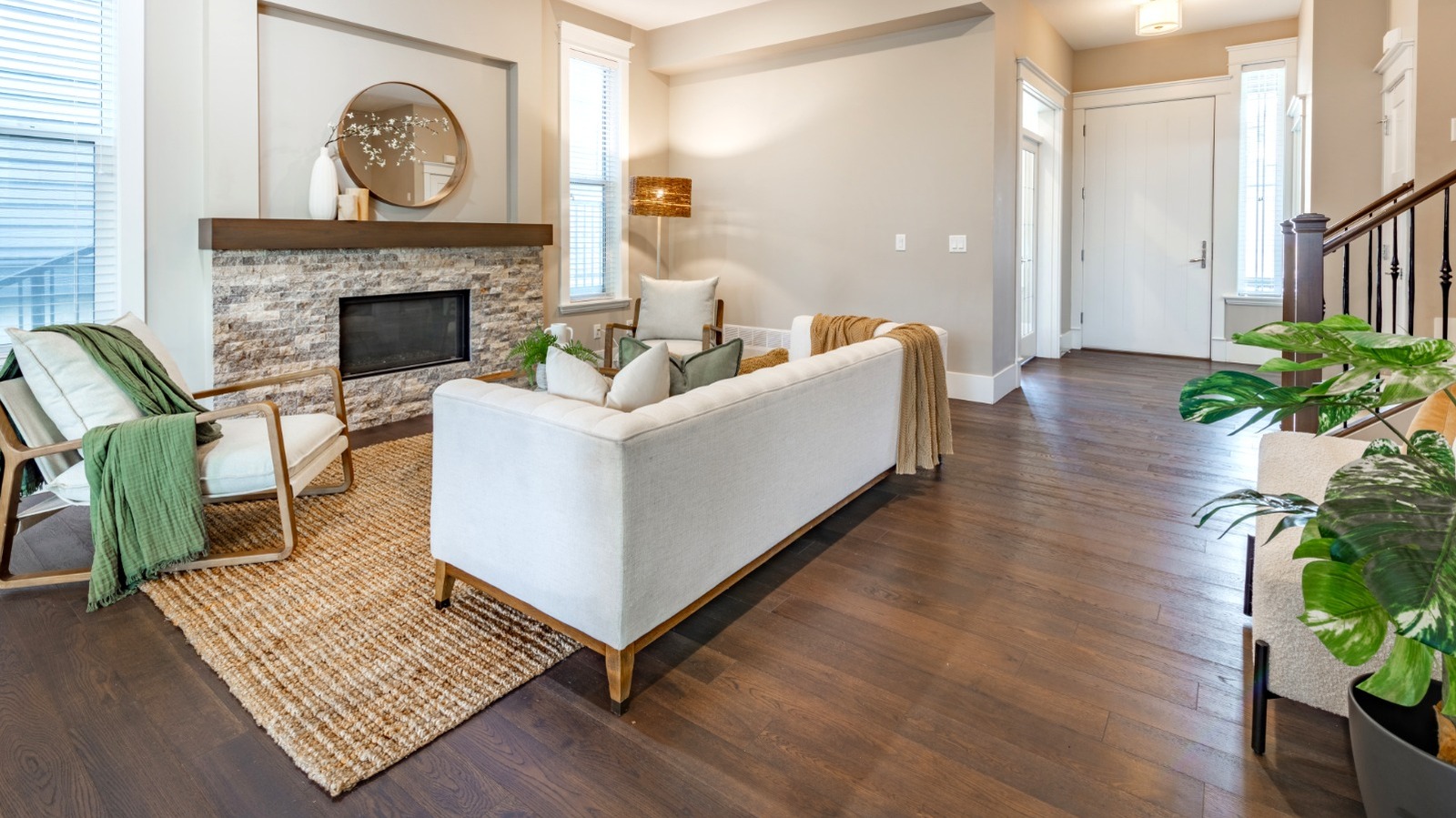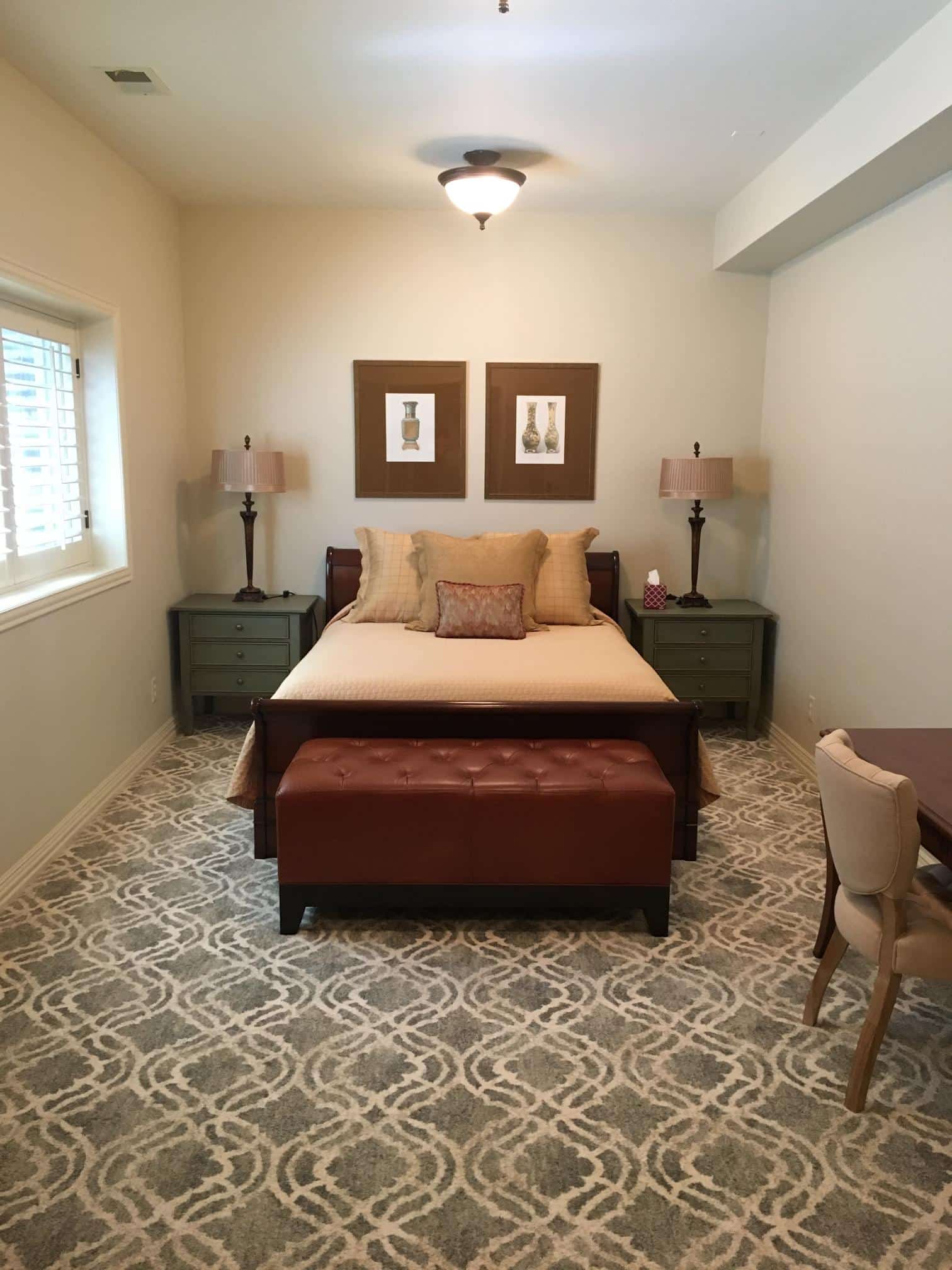Basements tend not to be the most celebrated of spaces in the home. Even the dictionary.com definition—“a story of a building, partly or wholly underground”—is decidedly drab. Generally comprising cavelike laundry rooms, fairly useless half baths, more cozy than chic family lounge areas, and the occasionally creepy storage room (why is there always a drain?), your home’s subterranean square footage could likely use a little love.
Since a basement renovation is no easy task, it makes sense to start with a form-meets-function choice and upgrade your basement flooring. Materials for a basement floor project should be hardy, water-resistant, and made to stand the test of time. Mark Cutler, cofounder of CutlerSchulze, a luxury interior design firm in Los Angeles, shares that “durability, ease of cleaning, moisture resistance, and at least some degree of sound mitigation” are the most vital factors for determining the best basement floor options.
There’s much to wade through regarding materials, but fear not, as we’ve tapped three veteran designers to discover their favorite basement floor ideas. These approachable (but still aesthetically pleasing) flooring materials range from the usual suspects to the unexpected (cork? what?) and everything in between. Read on to see what interior designers suggest for types of basement flooring.
Epoxy
Before you choose your basement flooring, consider how you’ll be using your space, advises Dallas-based interior designer Jean Liu. If you’re using the space primarily for storage, the ELLE DECOR A-Lister suggests an epoxy surface. “I like the idea of finishing the floors with epoxy the way a garage floor would be finished,” she says. “It’s a nice way to upgrade it from being plain concrete while still being able to withstand the elements and conditions that go along with being an underground space.”
Cork
According to Cutler, a veteran designer with more than two decades of experience, cork is another good pick for basement flooring. “It’s easy to clean, not especially expensive, and it comes in a multitude of colors,” the design pro shares. “There is a degree of retro chic that goes along with this, so if you’re looking for a bit of a Brady Bunch vibe, whether in an ironic way or not, this is the choice for you.” As a bonus, cork floors are durable, low maintenance, and naturally water- and rot-resistant, making them a prime pick for a basement floor.
Porcelain Tile
In terms of classic or standby solutions for basement floors, tile has been a longtime go-to. Cutler prefers porcelain tile since it’s easy to clean, durable, and water-resistant. “Many companies now make pieces almost the size of slabs. I love to use these, especially in more contemporary spaces where the larger format reads more modern,” he says. This allows for a natural stone look without the price tag and the maintenance. “I try to stay away from natural stone tile in a basement. I find that it can be difficult to clean, and the added thickness can sometimes be an issue,” Cutler adds.
Slate
Belinda Pabian, the Omaha, Nebraska–based founder of Belinda Pabian Interior Decorating and Styling, gravitates toward slate as a basement flooring option. Slate is one of the strongest natural stone flooring materials and is resistant to cracks and chipping, making it ideal for highly trafficked spots. She further elaborates, “Given the nature of basements, I prefer natural fibers and stones to bring warmth and comfort to a space, [and] I love the idea of a slate floor.” Depending on where her clients’ home is located, the designer will occasionally suggest adding a heating element under the slate for an extra layer of comfort in a sometimes chilly basement area. She also loves it since it’s a great base layer for adding rugs, like a durable wool creation.
Vinyl Wood Flooring
Another excellent way to finish a basement is to consider using vinyl wood flooring planks. “This gives the appearance of a finished hardwood floor, but the PVC composition of the flooring makes it impervious to water,” explains interior designer Liu. Vinyl wood flooring comes in various colors, designs, and patterns, making it a great option for any basement style.
Laminated Wood Floor
Cutler, for his part, prefers a laminated wood floor. He expands: “If you’re looking for something that is a bit more elegant, a wood plank floor may be just the thing. Using a laminated wood material will provide more stability against moisture and give you a product that is much more likely to succeed in a basement setting.” The designer suggests always using a moisture barrier underneath to improve longevity.
Terrazzo
Cutler also enjoys terrazzo for a basement floor solution. He explains: “It has the considerable benefit of coming as a tile or can be created on-site. Although this approach is more expensive, it gives a very clean and custom look.” A resurgent retro trend, “terrazzo is essentially a concrete with a colored additive, usually glass, so you can tweak the combination to whatever color you want, which can provide a fantastic conversation piece,” the design pro adds.
Linoleum
Linoleum can be an ideal choice for basement flooring. According to Cutler, “This is another retro favorite, but as far as I am concerned, it has never gone out of style.” The designer points to its composition, a green material, made of cork and linseed oil, as another perk. Beyond that sustainability angle, linoleum comes in a vast range of colors and patterns, which gives it the ultimate flexibility. “I prefer to use it off the roll rather than tile, as I like clean, unobstructed patterns, but either way, it’s an excellent choice for a basement project,” he says.
Additional Considerations
While these basement flooring materials work as stellar decorating choices when refurbishing or finishing a basement, just remember that preparation is everything. “The basement, more than any other room in your home, is subject to stress. This can be from water, temperature change, etcetera, so making sure that you pay lots of attention to prep will save you time and money later,” Cutler says. Before you begin, he advises, make sure to inspect your floor for cracks, levelness, and telltale signs of water seepage, like calcium deposits. You’ll also want to apply a waterproof seal before you begin to install your flooring. “This will give you peace of mind and a floor that will last,” he explains. “While it is tempting to skimp on some of the things you don’t see when preparing the floor, it is absolutely penny-wise and pound foolish.”






